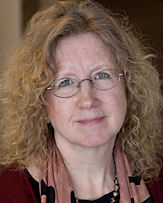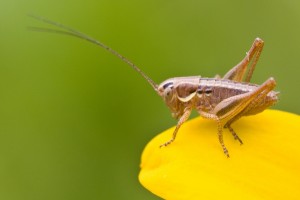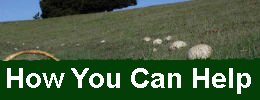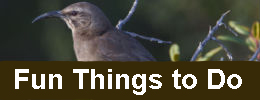 A few months ago, in the heat of our appeals to the Planning Commission and the City Council, I received an email from a supporter of the Zoo’s theme park development plans for Knowland Park. “There’s nothing there,” she said, arguing that this was a reason to develop it. This floored me for a moment. I tried to think how I could explain, but wondered if we just lived in worlds too different for words.
A few months ago, in the heat of our appeals to the Planning Commission and the City Council, I received an email from a supporter of the Zoo’s theme park development plans for Knowland Park. “There’s nothing there,” she said, arguing that this was a reason to develop it. This floored me for a moment. I tried to think how I could explain, but wondered if we just lived in worlds too different for words.
I responded politely that actually, there is a “there there,” in Gertrude Stein’s often misused words about Oakland (which pertained to visiting a place she had once lived and finding it changed). In this case, the “there” that is there is the living creatures that have lived and hunted and raised their young in Knowland Park since many, many years before it was a park—since a time before there were parks, when the hills teemed with even more wildlife than today. Our animal brothers and sisters have lived here since long before human beings put up the fences, cut down the trees, paved the creeks, and bulldozed the land to suit our purposes.
But the “there” in Knowland Park is also a quality that certain special places have, the ability to evoke in those open to it a sense of awe and wonder, a sense of gratitude, an awareness of our little time span in the big picture of things. It’s what accounts for the way some people gasp when they first glimpse the park’s magnificent views, but it isn’t just the views alone. At a meeting called by Zoo executives to “listen” to community concerns (at which, unfortunately, it became clear that Zoo executives might be listening, but did not hear) one woman said softly and respectfully of Knowland Park, “It makes me feel like an Ohlone.” I knew immediately what she meant. While someone who is not a tribal member can’t ever truly “know” the experience of being part of that culture, the park is a place that has the capacity to inspire and energize a part of our essential humanity that feels at home in nature, rather than alienated from it.
To say this is not to support some romanticized view of nature in which it is all warm and fuzzy and there are no threats. Nature is full of things that can hurt. But the most terrible things that can hurt us come from ourselves, and this is at least partly because we have grown so distant from a sense of our own finitude and place in the cycle of life. In our efforts to control everything that may hurt us, we lose touch with what keeps us alive.
That is why the fight for Knowland Park is not just a local issue. It is part of a much larger set of battles that extend to climate change and the struggle to find sustainable ways to live. Those who cannot see and those who refuse to hear continue business as usual, pretending that the world is here for us to fill up, use up and discard. But this is our only planet, and all over the world, people are taking a stand to save the places that still speak to us in a language we have not yet entirely forgotten how to understand.

Ruth Malone is a resident of Oakland since 1983, a founding member and co-chair of Friends of Knowland Park and a longtime Oakland neighborhood activist. Since 2007, she has been working to educate and organize environmentalists, park users, and community members to protect the park. In her day job, she is a professor of nursing and health policy at University of California, San Francisco, where she helps students study the links between health and political, social and natural environments, and conducts research on the tobacco industry and its efforts to thwart public health efforts worldwide.
Ruth Malone’s Reflections Blog offers a combination of reflective essays and updates from the Protect Knowland Park Campaign, linking the fight to protect Knowland Park to broader environmental and ethical issues.

 Follow
Follow








Comments are closed.